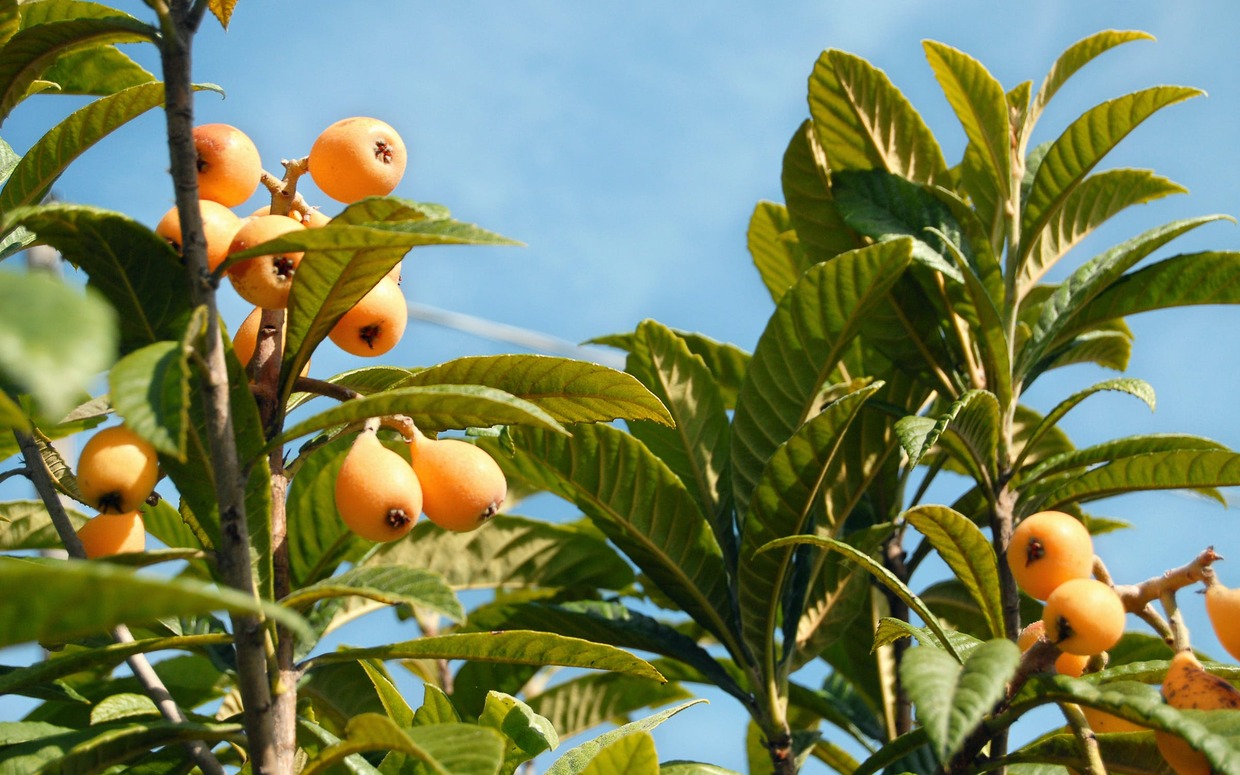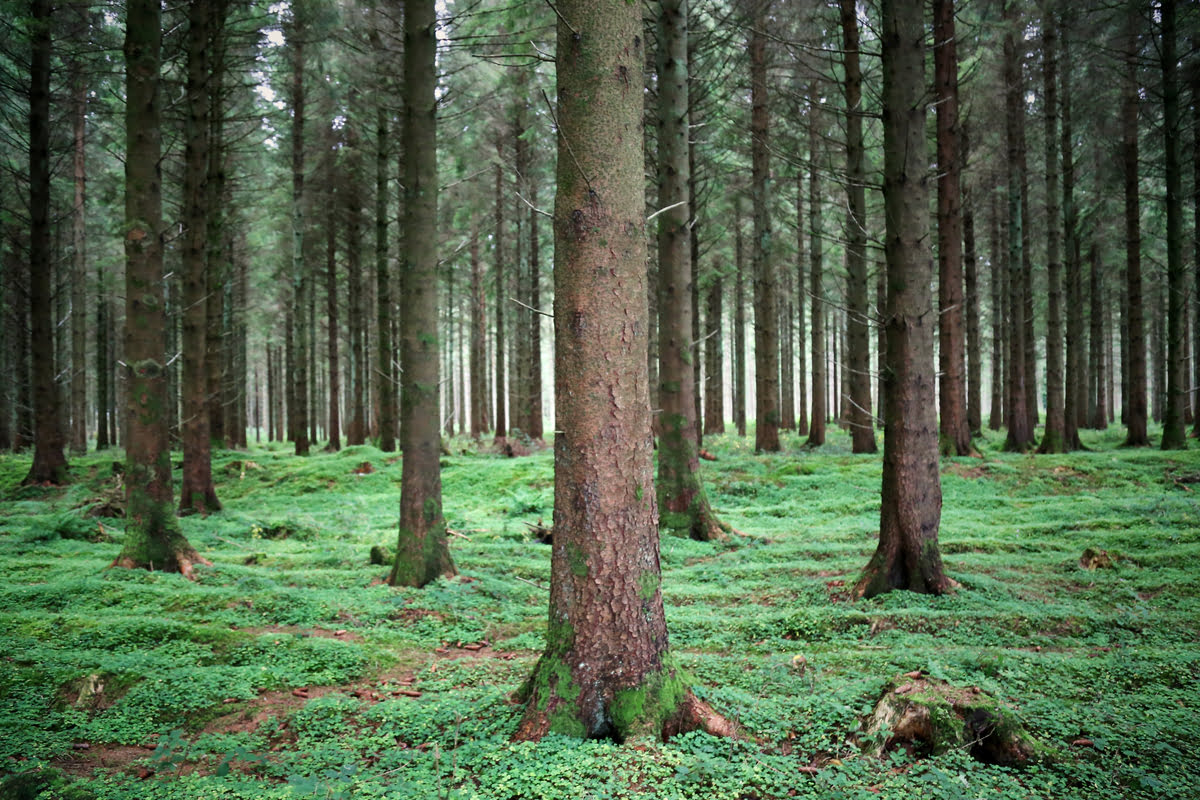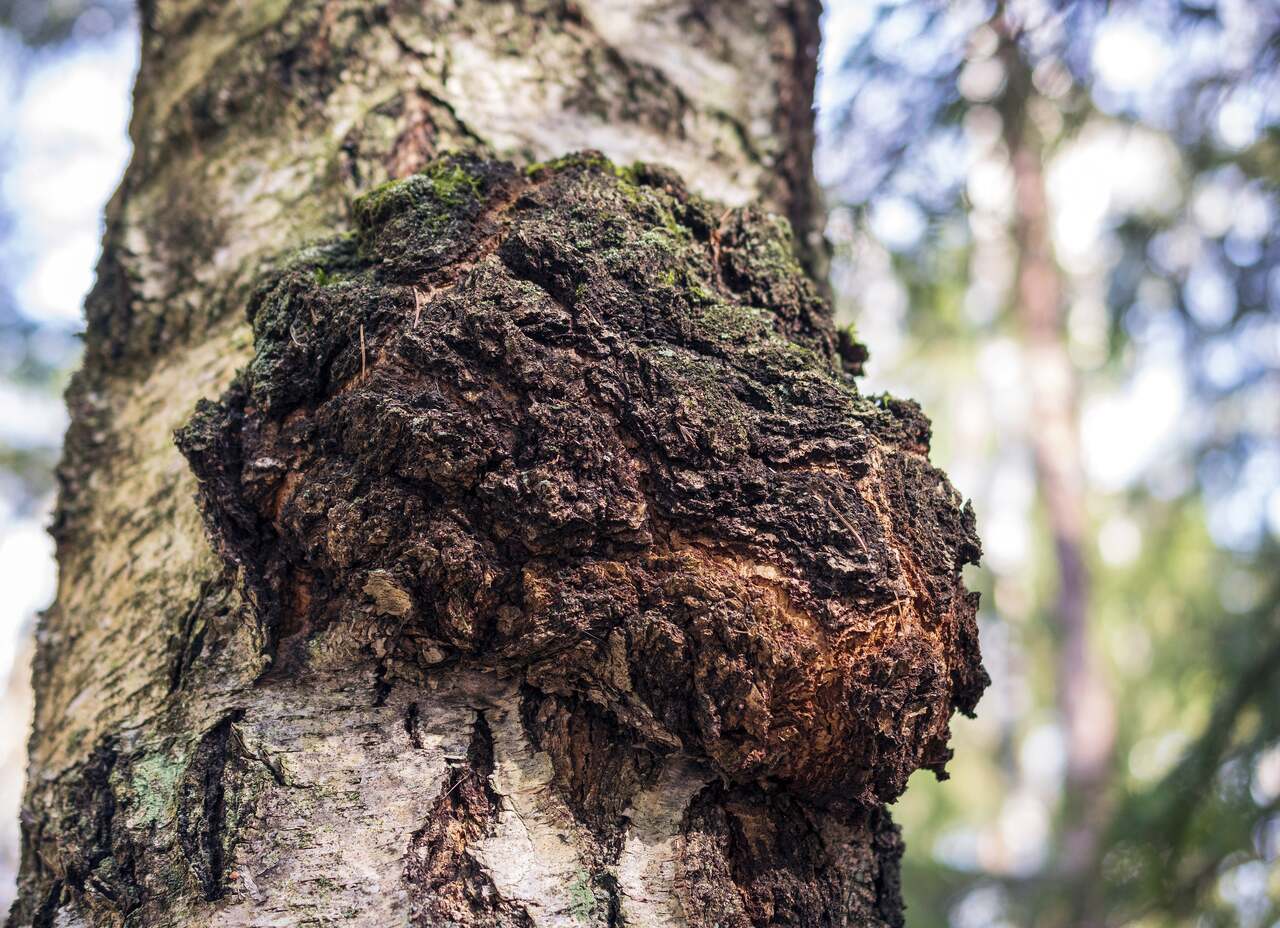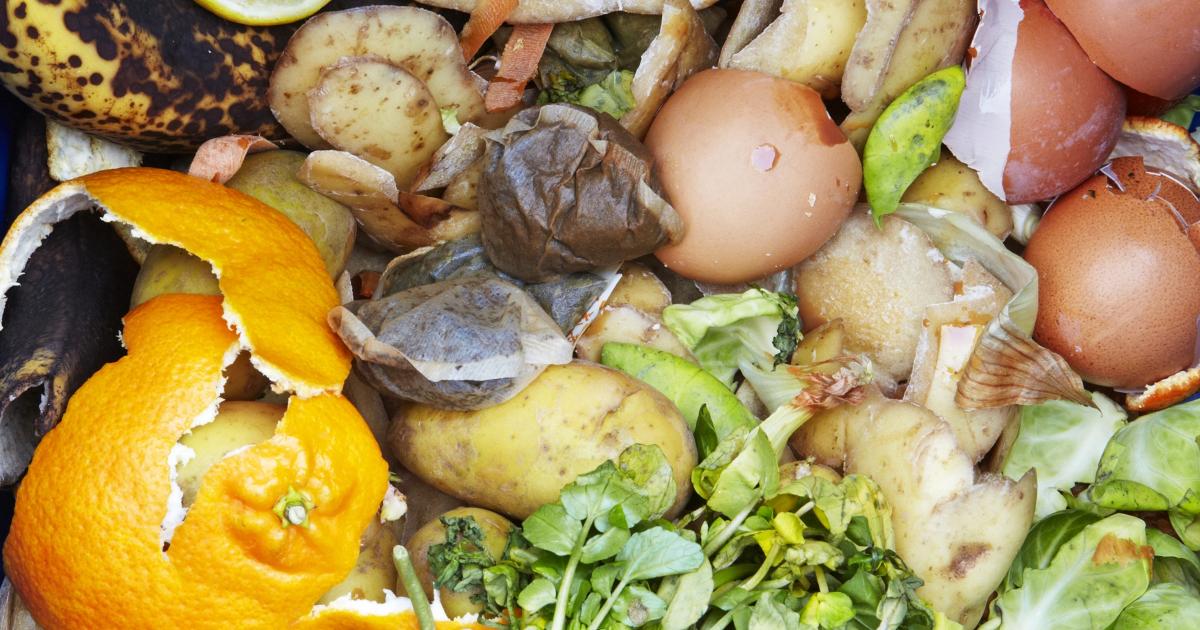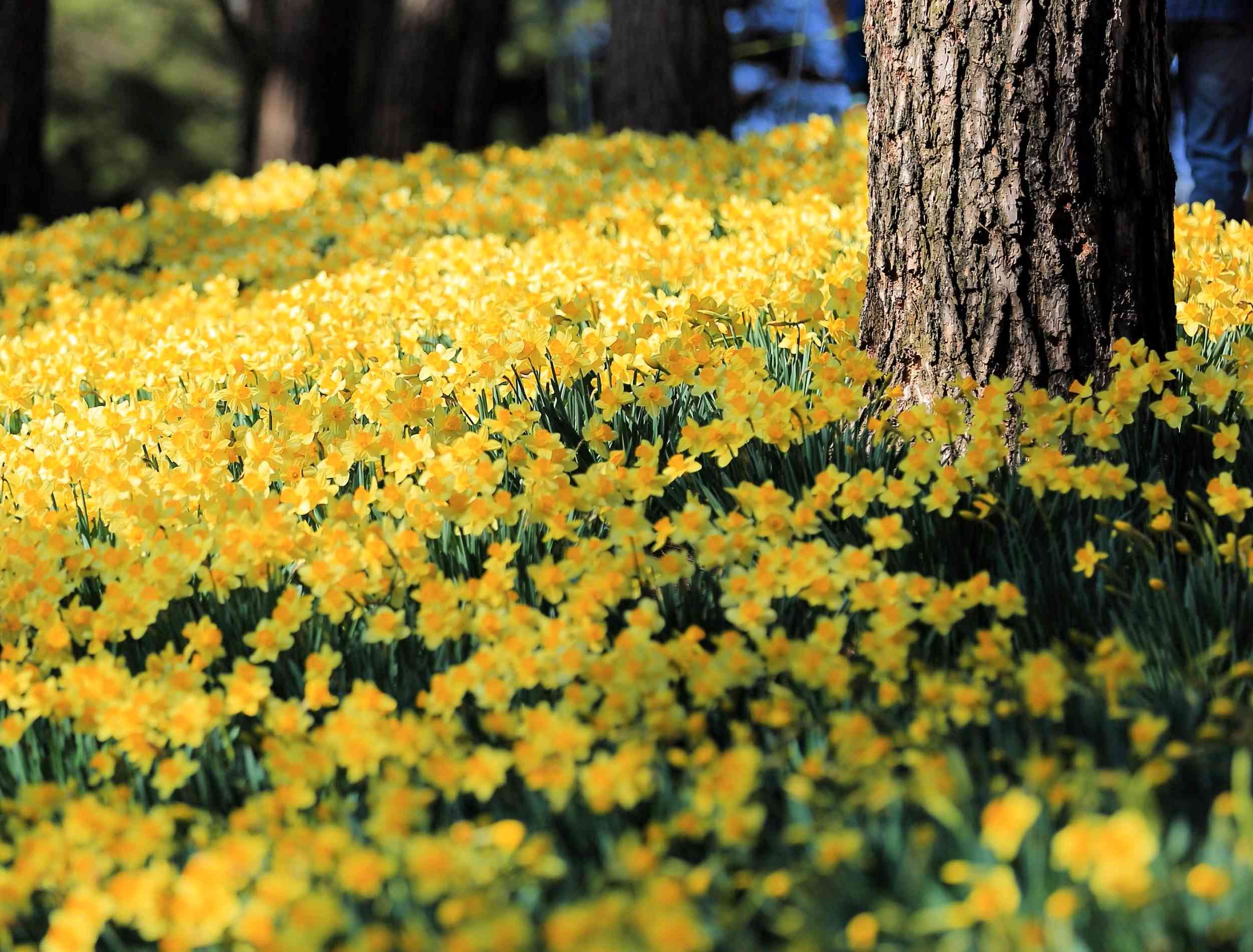Home>Types of Gardening>Edible Gardening>What Food Grows On Trees
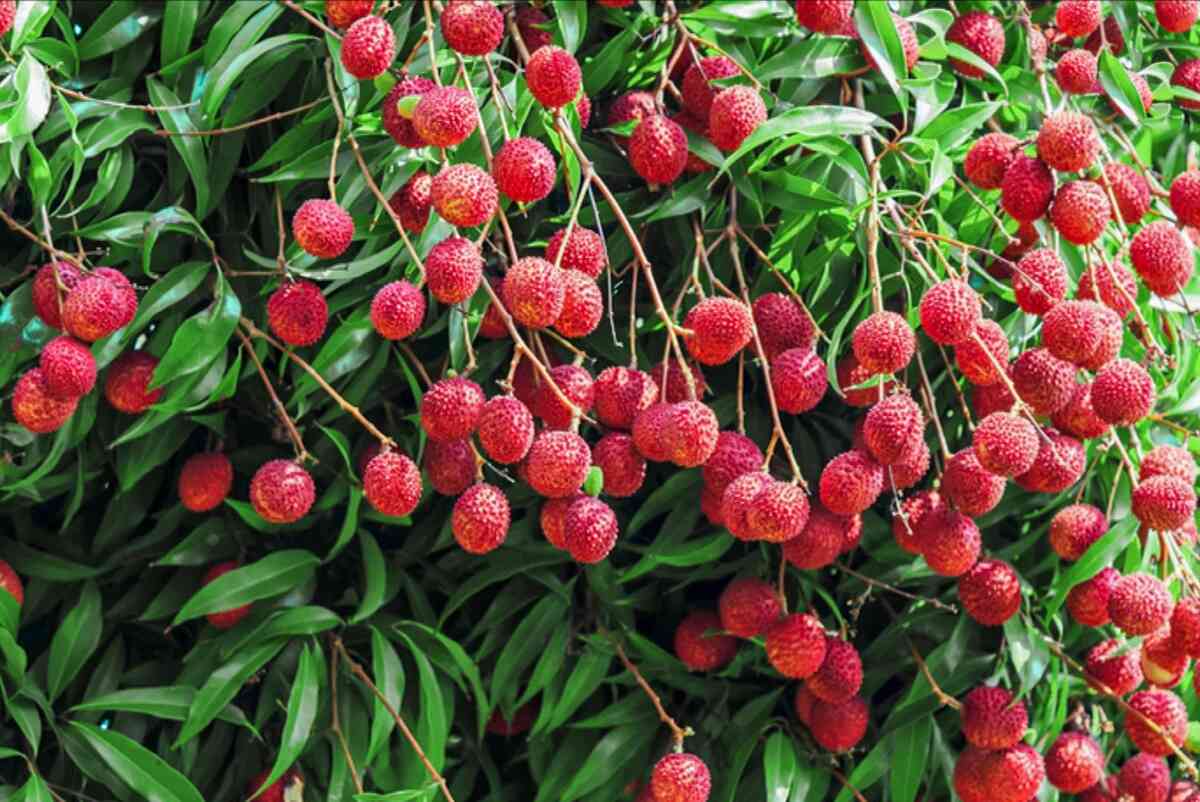

Edible Gardening
What Food Grows On Trees
Modified: January 22, 2024
Discover the joy of edible gardening and explore the delicious variety of foods that can be grown on trees. Start your own food oasis today!
(Many of the links in this article redirect to a specific reviewed product. Your purchase of these products through affiliate links helps to generate commission for Chicagolandgardening.com, at no extra cost. Learn more)
Table of Contents
Introduction
Welcome to the world of edible gardening, where you can reap the rewards of growing your own food. There’s nothing quite like the satisfaction of picking and enjoying fresh, homegrown produce straight from your own garden. While many people associate edible gardening with traditional vegetables and herbs, there is a whole world of delicious possibilities that can be found in the realm of edible trees.
Growing food on trees might sound like a dream, but it’s a reality that can be easily achieved in your own backyard. Fruit trees, nut trees, and even some unexpected varieties can provide you with an abundance of tasty and nutritious food. Whether you have a small space or a large garden, there’s a tree that’s perfect for you.
Not only do edible trees offer an abundant harvest, but they also bring beauty and shade to your garden. With their lush foliage and vibrant fruits, they can transform your outdoor space into a lush and bountiful oasis. Plus, they provide an opportunity for you to connect with nature and engage in sustainable practices.
In this article, we will explore some of the most popular edible trees, their unique characteristics, and the delicious fruits or nuts they offer. We will also delve into lesser-known trees with edible parts, as well as nutrient-rich trees that can provide a health boost to your diet. So, let’s embark on a journey into the delightful world of edible gardening with trees.
Fruit Trees
Fruit trees are a staple in any edible garden. They not only provide a delicious harvest but also add beauty and fragrance to your outdoor space. Whether you have a small backyard or a sprawling garden, there’s a fruit tree that can thrive in your environment.
One of the most popular fruit trees is the apple tree. With its wide variety of cultivars, you can enjoy a range of flavors from tart to sweet. Apples are not only delicious when eaten fresh but can also be used in pies, sauces, and juices. They’re the perfect versatile fruit for any kitchen.
Citrus trees, such as oranges, lemons, and grapefruits, are also a favorite among gardeners. These trees thrive in warm climates and provide a burst of bright colors and refreshing flavors. From zesty lemonade to juicy orange slices, citrus fruits bring a tangy and invigorating taste to your table.
Another popular fruit tree is the peach tree. Known for their sweet and juicy flesh, peaches are a delight to enjoy during the summer months. They can be eaten fresh, added to salads or desserts, or made into jams and preserves. With their beautiful pink blossoms in the spring, peach trees also add a touch of elegance to your garden.
For a tropical twist in your garden, consider planting a mango tree. These trees thrive in warm climates and produce incredibly sweet and juicy fruits. Mangoes can be enjoyed fresh or used in a variety of dishes, from salsas to smoothies. The sight of a mango tree laden with ripe fruits is truly a feast for the eyes.
Other popular fruit trees include cherry trees, plum trees, and pear trees. Each of these trees offers its own unique flavors and characteristics, adding diversity to your edible garden. With proper care and maintenance, fruit trees can provide you with a bountiful harvest for years to come.
No matter which fruit tree you choose to grow, it’s important to provide the necessary care and attention it needs to thrive. Regular pruning, adequate watering, and protection from pests and diseases are essential for the health and productivity of your fruit trees. With patience and dedication, you’ll be rewarded with an abundant and mouth-watering harvest.
Nut Trees
If you’re looking to add a unique and nutritious element to your edible garden, consider planting nut trees. Nut trees not only provide a delicious and healthy snack, but they also add an element of beauty and shade to your outdoor space. With their impressive size and character, these trees can become a focal point in your garden.
One of the most well-known nut trees is the walnut tree. Walnuts are not only delicious but also packed with nutrients like omega-3 fatty acids and antioxidants. They can be eaten on their own as a snack or used in a variety of recipes, such as salads, baked goods, and pesto. The rich, buttery flavor of walnuts adds a delightful crunch to any dish.
Another popular nut tree is the almond tree. Almonds are highly nutritious and are known for their high protein and healthy fat content. These nuts can be enjoyed raw, roasted, or used in various culinary creations. Almond trees are also visually stunning with their delicate white or pink blossoms in the spring.
If you’re looking for a nut tree that provides a more exotic flavor, consider growing a hazelnut tree. Hazelnuts are prized for their rich, buttery taste and can be used in both sweet and savory dishes. From Nutella spreads to chocolate-hazelnut desserts, these nuts are a versatile addition to your pantry.
Chestnut trees are another wonderful option for nut-loving gardeners. Chestnuts have a distinct flavor and can be roasted, boiled, or used in a variety of culinary preparations. They are a staple ingredient in many traditional dishes, particularly during the holiday season. The majestic presence of chestnut trees also adds a touch of grandeur to your garden.
When planting nut trees, it’s important to consider their size and space requirements. Many nut trees, such as walnut and chestnut trees, can grow quite large and require ample room to spread their branches. Be sure to plant them in an area with plenty of sunlight and well-drained soil. Proper care, including regular pruning and fertilizing, will help ensure healthy growth and abundant nut production.
Having nut trees in your edible garden not only provides you with a sustainable source of nutritious snacks but also allows you to enjoy the process of nurturing these trees and witnessing the fruits of your labor. So, why not add some nut trees to your garden and experience the joy of growing your own delicious and wholesome nuts?
Citrus Trees
Citrus trees are a delightful addition to any edible garden. With their vibrant colors, aromatic blossoms, and juicy fruits, citrus trees bring a refreshing and invigorating element to your outdoor space. Whether you live in a warm climate or have a sunny spot indoors, growing citrus trees allows you to enjoy the taste of sunshine all year round.
One of the most popular citrus trees is the orange tree. Oranges are not only a delicious and versatile fruit but also a great source of vitamin C. From the sweet and juicy Valencia orange to the tart and tangy blood orange, there are many varieties to choose from. Oranges can be enjoyed fresh, squeezed into juice, or used in a variety of culinary creations, from desserts to savory dishes.
Lemons are another beloved citrus fruit that can be easily grown in your garden. With their bright yellow color and zesty flavor, lemons add a refreshing twist to dishes and beverages. From lemonade to lemon desserts, these tangy fruits are a staple in many kitchens. Plus, lemon trees are known for their fragrant blossoms, which fill the air with a delightful citrus scent.
Grapefruit trees are also a popular choice among citrus lovers. With their distinct sweet and sour taste, grapefruits are not only delicious but also packed with vitamins and antioxidants. They can be enjoyed as a refreshing snack, added to salads, or juiced for a tangy beverage. Ruby red grapefruits, with their vibrant pink flesh, are particularly enticing.
For a unique citrus flavor, consider growing a tangerine or mandarin tree. These small and easy-to-peel fruits are sweet and tangy, making them a delightful treat for both kids and adults. They can be eaten fresh, juiced, or added to salads and desserts.
When it comes to growing citrus trees, it’s important to provide them with the right conditions. Citrus trees thrive in full sunlight and well-drained soil. If you live in a colder climate, you can grow citrus trees in containers and bring them indoors during the winter months. Regular watering, fertilizing, and protection from pests will help ensure healthy growth and abundant fruit production.
Having citrus trees in your garden not only provides you with a constant supply of fresh, vitamin-packed fruits but also adds beauty and fragrance to your outdoor space. The sight of colorful fruits hanging from the branches and the aroma of blossoms will transport you to a sunny and tropical paradise. So, why not bring the taste of citrus to your garden and enjoy the zest and vitality it brings to your life?
Avocado Trees
Avocado trees have gained immense popularity in recent years due to the rich and creamy fruits they produce. With their buttery texture and unique flavor, avocados have become a staple ingredient in many dishes, from guacamole to salads and sandwiches. Growing your own avocado tree allows you to have a constant supply of this nutritious and versatile fruit right at your fingertips.
Avocado trees thrive in warm climates and can be grown in both tropical and Mediterranean regions. They require well-drained soil and ample sunlight to grow and produce abundant fruits. While it may take a few years for an avocado tree to bear fruit, the wait is worth it once you taste the delicious harvest.
One of the advantages of having an avocado tree is the ability to enjoy the fruit at its peak ripeness. There’s nothing quite like picking a perfectly ripe avocado from your own tree and savoring its creamy texture and nutty flavor. Avocados are not only delicious but also packed with healthy fats, fiber, vitamins, and minerals, making them a nutritious addition to any diet.
Avocado trees come in different varieties, each with its own unique characteristics. Some varieties are more cold-hardy, while others have larger fruits or different skin textures. Popular avocado varieties include Hass, Fuerte, Reed, and Bacon, among others. It’s best to research the specific variety that is most suitable for your climate and preferences.
When planting an avocado tree, it’s important to give it enough space to grow. These trees can reach a significant size, with long branches and a wide canopy. Be mindful of the distance between other trees or structures to allow for proper growth and development. Regular pruning and maintenance are also necessary to ensure the tree remains healthy and produces a good harvest.
Avocado trees are not only prized for their fruits but also for their lush foliage and attractive appearance. Their large, glossy leaves add a touch of elegance to any garden, and they can be used as a shade tree or a visual focal point. The sight of an avocado tree laden with fruits is truly a remarkable sight.
So, if you’re a fan of avocados and have the right climate, why not consider growing your own avocado tree? Not only will you have an abundant supply of delicious fruits, but you will also experience the joy and satisfaction of nurturing a beautiful and productive tree in your own backyard.
Olive Trees
Olive trees have been cultivated for thousands of years and are not only prized for their fruit but also for the oil extracted from their olives. The unique flavor and versatility of olives have made them a staple ingredient in Mediterranean cuisine. Growing your own olive tree allows you to experience the joy of harvesting and preserving your own olives, as well as enjoying the health benefits of olive oil.
Olive trees are well-suited to Mediterranean and dry subtropical regions, where they thrive in warm and sunny climates. They are hardy and can tolerate a variety of soil conditions, though they prefer well-drained soil. These evergreen trees have a distinctive appearance, with their silver-grey leaves and gnarled trunk, adding a touch of elegance and character to any garden.
Olives can be harvested at different stages of ripeness, resulting in a variety of flavors. Green olives are typically harvested before they fully ripen, resulting in a firm and slightly bitter taste. Black olives, on the other hand, are harvested at full ripeness and have a softer texture and milder flavor. There are also many intermediate stages of ripeness that produce different flavors and textures.
In addition to enjoying olives as a snack, they can also be used in a variety of culinary applications. From olive tapenade to salads, pizzas, and pasta dishes, olives add a distinct and savory taste. Olive oil, extracted from the fruit, is not only a flavorful cooking oil but also has numerous health benefits, being rich in monounsaturated fats and antioxidants.
When planting an olive tree, it’s important to consider its space requirements. These trees can grow quite large, so ensure that they have enough room to spread their branches without being crowded by other plants or structures. Olive trees also have a slow and steady growth rate, so be patient when waiting for your first harvest.
Proper care and maintenance are crucial for the health and productivity of olive trees. They require regular watering, especially during dry periods, to ensure optimal growth. Pruning is also important to shape the tree and remove any diseased or damaged branches. Additionally, olives are relatively pest-resistant, but it’s still important to monitor for any potential issues.
Having an olive tree in your garden can be a rewarding experience. Not only do you get to witness the transformation of flowers into fruits but you also have the opportunity to create your own olives and olive oil. So, consider adding an olive tree to your garden and enjoy the taste of this ancient and versatile fruit.
Nutrient-Rich Trees
When it comes to edible gardening, it’s not just about the delicious flavors but also about the nutritional benefits. There are several trees that not only provide a fruitful harvest but also pack a nutritional punch. These nutrient-rich trees can be a valuable addition to your garden, helping to supplement your diet with a wide range of vitamins, minerals, and antioxidants.
One such nutrient-rich tree is the moringa tree. Also known as the “miracle tree,” moringa leaves are loaded with essential nutrients, including protein, vitamin C, iron, and calcium. They can be eaten fresh in salads, sautéed as a side dish, or dried and ground into a powder to use as a nutritional supplement. Moringa trees are also known for their fast growth and can be easily cultivated in warm climates.
Another tree that packs a nutrient punch is the papaya tree. Papayas are not only delicious and refreshing but also rich in vitamin C, vitamin A, fiber, and enzymes that aid digestion. The ripe fruit can be enjoyed on its own or added to smoothies, salads, and desserts. The papaya tree’s tropical appearance and large, palm-like leaves add a touch of exotic beauty to any garden.
The fig tree is also a nutrient powerhouse, providing a good source of fiber, potassium, and antioxidants. Figs can be eaten fresh, dried, or used in a variety of culinary creations, from desserts to savory dishes. Fig trees are relatively easy to grow, making them a great addition to any garden.
If you’re looking for a tree that can provide both nutritional benefits and medicinal properties, consider the neem tree. Neem leaves are highly valued in traditional medicine for their antifungal, antibacterial, and anti-inflammatory properties. They can be brewed into a tea or ground into a powder for various uses. Neem trees are well-adapted to warmer climates and can tolerate drought conditions.
When incorporating nutrient-rich trees into your garden, it’s important to provide them with the proper care and growing conditions. Adequate sunlight, watering, and soil nutrition are key factors in ensuring the health and productivity of these trees. Regular pruning and maintenance are also necessary to maintain their shape and encourage optimum growth.
With nutrient-rich trees in your garden, you have the opportunity to enhance your diet with a variety of healthy and wholesome foods. Not only will you enjoy the taste and texture of these fruits and leaves, but you will also reap the nutritional benefits that can contribute to your overall well-being.
So, why not consider planting some nutrient-rich trees and embark on a journey towards a more nourishing and sustainable way of life?
Edible Bark and Leaves
When we think of edible gardening, we often imagine juicy fruits and vibrant vegetables. However, the world of edible gardening goes beyond just the fruits and vegetables that grow above the ground. There are trees that not only provide nutritious and delicious fruits but also offer edible barks and leaves that can be incorporated into our diets in various ways.
One such tree is the birch tree. The bark of birch trees is edible and has a mild and slightly sweet flavor. It can be harvested and used in various culinary creations, such as infusions, teas, or even as a wrap for cooking. Birch bark is known for its medicinal properties and is commonly used in traditional medicine for its anti-inflammatory and detoxifying effects.
The inner bark of the pine tree, known as cambium, is also edible and has been consumed by indigenous cultures for centuries. Cambium has a slightly sweet or resinous taste and can be eaten raw or cooked. It can be used in soups, stews, or even ground into a flour substitute. Pine needles can also be used to make a fragrant and invigorating tea.
Sycamore trees have edible leaves that can be enjoyed as a nutritious addition to salads or used as a wrap for cooking. The leaves have a mild and slightly peppery flavor, and their large size makes them an ideal alternative to lettuce or cabbage leaves. Sycamore leaves are best harvested when young and tender.
The leaves of the elderberry tree can also be used in the culinary world. Elderberry leaves are rich in antioxidants and can be infused into teas or used as a flavoring agent for desserts and savory dishes. They have a slightly bitter taste and can add complexity to various recipes.
When incorporating edible bark and leaves into your diet, it’s important to ensure that the tree and its parts are safe for consumption. Make sure to properly identify the tree and consult reliable sources or experts to verify their edibility. Additionally, harvest the bark and leaves in a sustainable manner, taking only what is needed and being mindful of the tree’s health.
By exploring the world of edible bark and leaves, we can not only expand our culinary horizons but also appreciate the versatility and abundance that trees provide. These often overlooked parts of the tree can offer unique and nutritious flavors, adding depth to our meals and connecting us to the bountiful gifts of nature.
So, why not venture beyond the traditional fruits and vegetables and discover the delicious possibilities that edible bark and leaves can bring to your edible garden?
Lesser-Known Trees with Edible Parts
When it comes to edible gardening, there are numerous trees that go beyond the well-known fruits and nuts. In fact, there are several lesser-known trees with edible parts that can offer unique flavors and culinary possibilities. These hidden treasures can add diversity to your garden and open up a whole new world of edible delights.
One such tree is the pawpaw tree. Native to North America, the pawpaw tree produces delicious and custard-like fruits. Pawpaws have a tropical flavor, often described as a blend of mango, banana, and melon. The soft and sweet flesh can be enjoyed fresh or used in a variety of desserts, including ice creams, pies, and smoothies. While pawpaw trees may be less common in mainstream gardens, they are definitely worth considering for their unique and delectable fruits.
The persimmon tree is another lesser-known tree that offers edible fruits. Persimmons are known for their vibrant orange color and rich, sweet flavor. When ripe, they have a soft and pulpy texture that can be eaten fresh or used in baked goods, jams, and puddings. Persimmons are a delightful addition to any garden, both for their fruits and their ornamental value.
The jujube tree, also known as the Chinese date tree, produces small, date-like fruits. Jujubes have a sweet and chewy flesh with a flavor reminiscent of apples. They can be enjoyed fresh as a snack or used in a variety of culinary preparations, including jams, preserves, and desserts. Jujube trees are quite hardy and can tolerate a range of growing conditions, making them suitable for a variety of gardens.
The carob tree, native to the Mediterranean region, is another lesser-known tree with edible parts. The pods of the carob tree contain a sweet, chocolate-like flavor that can be used as a substitute for cocoa powder or chocolate. Carob powder is often used in baking, smoothies, and desserts. Carob trees are also attractive with their glossy evergreen leaves, making them a beautiful addition to a garden landscape.
When considering lesser-known trees with edible parts, it’s important to research their specific growing requirements and suitability for your climate. Some of these trees may have specific soil, water, or temperature needs that should be taken into account. With proper care and attention, these hidden gems can thrive in your garden and provide you with unique and delicious fruits.
So, don’t be afraid to explore beyond the familiar and consider planting some of these lesser-known trees with edible parts. You’ll not only expand your culinary repertoire, but you’ll also be rewarded with a garden that offers a delightful array of flavors from these hidden treasures.
Conclusion
Edible gardening with trees is a captivating and rewarding endeavor that allows you to cultivate a diverse array of delicious and nutritious food right in your own backyard. From fruit trees that offer a plethora of flavors and colors to nut trees that provide a satisfying crunch, the options are endless when it comes to incorporating trees into your edible garden.
Exploring the world of edible trees opens up a whole new dimension of gardening. From the familiar citrus trees and apple trees to the lesser-known pawpaw trees and jujube trees, each tree offers its own unique charm and flavors. The joy of planting a tiny sapling and nurturing it as it grows into a mighty tree, bearing fruits and providing shade, is an experience like no other.
In addition to the traditional parts of trees that we consume, such as fruits and nuts, there are also edible barks and leaves that can be utilized in various culinary creations. From birch bark to pine cambium, these often-overlooked parts of trees can add depth and unique flavors to your dishes.
When embarking on your edible gardening journey with trees, it’s important to consider the specific needs of each tree. Providing proper care, including adequate sunlight, water, and soil conditions, is essential for their growth and productivity. Regular pruning and maintenance ensure that your trees remain healthy and fruitful for years to come.
Edible gardening with trees not only provides a sustainable and bountiful source of food but also offers numerous other benefits. Trees bring beauty and serenity to your garden, creating a harmonious and inviting space. They also attract beneficial insects and wildlife, promoting a thriving ecosystem. Additionally, the act of gardening itself is a wonderful way to connect with nature and promote a healthy and active lifestyle.
So, whether you choose to grow fruit trees, nut trees, or experiment with lesser-known varieties, the world of edible gardening with trees offers endless possibilities. Embrace the joy of planting, nurturing, and harvesting from these remarkable trees. Experience the delight of savoring the fruits of your labor and creating culinary masterpieces with the bountiful harvest that your trees provide.
Go ahead and embark on this fruitful journey. Plant a tree, nurture it, and witness it flourish into a magnificent provider of delicious and nutritious rewards. Edible gardening with trees is a delightful adventure that will bring you closer to nature, provide remarkable flavors, and leave you with a sense of accomplishment and fulfillment.
